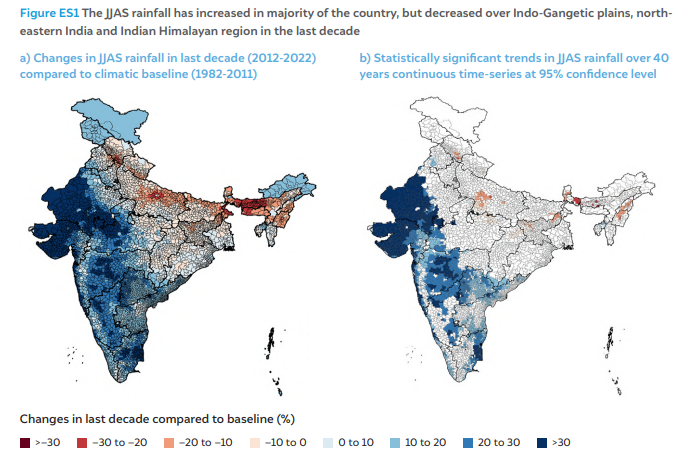
views
The southwest monsoon, responsible for over 75% of India’s annual rainfall, is becoming more erratic under climate change. Now a new study shows that as many as 23% of districts witnessed a worrying surge in both ‘deficient’ as well as ‘excess rainfall years’ over the last four decades — a period that also saw global temperatures rising by 1.1℃.
While the Indian monsoon is naturally prone to high variations, these changes have intensified over the years. The detailed assessment led by researchers from New Delhi-based Council on Energy, Environment and Water (CEEW) looked at the rainfall data for 4,500 tehsils across India of the last 40 years (1982-2022).
According to the data, 55% of the tehsils recorded a rise in monsoon rains, especially in the past 10 years. This included some historically dry regions — Rajasthan, Gujarat, central Maharashtra, and parts of Tamil Nadu. However, the worry is that this excess is largely coming from short duration, heavy rainfall events, which rose by 1-15 days per year during monsoon in 64 % of tehsils in the past decade. Such extreme conditions were prominently seen in Maharashtra, Tamil Nadu, Gujarat, and Karnataka – states with the highest Gross State Domestic Product.

“The occurrence of extreme weather events in India such as droughts and floods is closely linked to Indian monsoons. Our research reveals that the Indian monsoons, which inherently show high variability, are seeing even more intense changes over the last decade, showing a swapping pattern – alternating between droughts and floods,” said Shravan Prabhu, Research Analyst, CEEW.
The findings are in agreement with climate scientists who have raised concerns about the changing rainfall patterns leading to flash floods and simultaneously droughts in other areas. More rain is now falling in less number of days with long dry patches in between when there is no rain at all. The researcher also noted with concern that the frequency of dry days is on the rise in specific tehsils along the Indo-Gangetic plains and the northeast. There is also a significant delay in withdrawal of the monsoon, with monsoon rains continuing till mid-October.
“We need to future-proof the economy against increasingly erratic rainfall patterns. With increasing extreme weather events, hyper-local climate risk assessments and action plans are the way to go for India to keep leading in climate action and disaster risk reduction,” said Vishwas Chitale, Senior Programme Lead, CEEW.
The study also shows changing rainfall patterns in the northeast monsoon—from October to December—which is particularly crucial for south-peninsular India. The granular analysis showed that the northeast monsoon rainfall has increased by more than 10% in the last decade in approximately 80% of tehsils in Tamil Nadu, 44% in Telangana, and 39% in Andhra Pradesh. Further, Odisha and West Bengal on the East coast and Maharashtra and Goa on the West coast are seeing an increase in rainfall during this period.
Overall the southwest monsoon was normal in as many as 29 times in the last 40 years, above-normal eight times and below-normal in just three years, as per the IMD data. The team used the India Meteorological Data Assimilation and Analysis (IMDAA) reanalysis data as part of the government’s National Monsoon Mission.
















Comments
0 comment